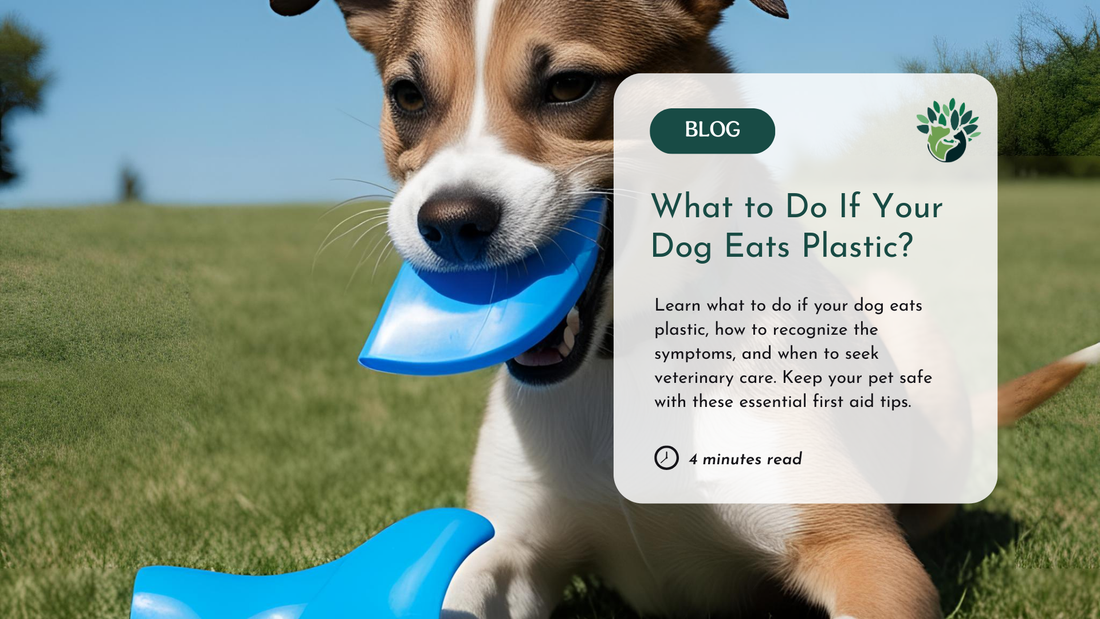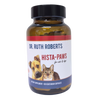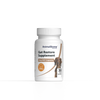If your dog eats plastic, don’t panic—accidents happen, and there are steps you can take to keep your pup safe. As we celebrate Earth Day, it's important to recognize how plastic pollution affects not just the planet and wildlife, but also the pets we love. Dogs are surrounded by plastic daily, from food packaging and chew toys to household items and even microplastics in their environment. If your dog eats plastic, it can quickly turn into a medical emergency.
In this post, you’ll learn what happens when a dog eats plastic, what symptoms to watch for, and how to reduce plastic-related risks at home, while supporting a cleaner, safer planet for pets and people alike.
What Happens if My Dog Eats Plastic?
When a dog eats plastic, it can lead to a range of problems—some minor, some serious—depending on the type, size, and amount of plastic ingested.
1. Mild Cases (Small, Soft Plastic)
If your dog swallows a small piece of soft plastic (like a candy wrapper or sandwich bag), it may pass through their digestive system without causing harm. However, it could still lead to:
-
Vomiting
-
Diarrhea
-
Loss of appetite
-
Mild abdominal discomfort
Even in mild cases, you should monitor your dog closely for any changes in behavior or symptoms.
2. Moderate to Severe Cases (Hard or Sharp Plastic)
If your dog chews or swallows something hard, sharp, or large, like a bottle cap, toy fragment, or plastic container lid, it may:
-
Cause choking
-
Get stuck in the throat or intestines
-
Puncture or tear the digestive tract
-
Lead to a life-threatening blockage
These cases often require emergency veterinary care and possibly surgery.
3. Microplastics and Long-Term Exposure
Even if your dog isn’t actively eating plastic, they may be exposed to microplastics through food, water, or plastic pet products. While research is still emerging, chronic exposure to microplastics may impact gut health, hormone balance, and overall wellbeing over time.
Step-by-Step Guide: What to Do If Your Dog Eats Plastic
If your dog eats plastic, stay calm and follow these key steps to protect their health:

Can You Feed or Give Water After Your Dog Eats Plastic?
In most cases, you can offer your dog small sips of water, unless your vet advises otherwise. This helps keep them hydrated, especially if they’ve vomited. Avoid forcing water if your dog seems nauseous or uninterested.
When it comes to food, only feed if your dog is eating normally and showing no signs of distress. If approved by your vet, you can offer a bland, soft meal such as:
-
Boiled chicken (no skin or bones)
-
Plain white rice
-
A small amount of pumpkin purée (not pie filling)
These foods are gentle on the stomach and may help cushion small pieces of plastic while passing through the digestive tract—but only under veterinary guidance.
If your dog refuses food or vomits after eating, stop feeding and contact your vet immediately.
How to Prevent Your Dog from Eating Plastic
Prevention is the best way to protect your dog from plastic-related emergencies. Here’s how:
-
Store plastic items safely: Keep bags, wrappers, and containers out of your dog’s reach.
-
Use dog-proof trash cans: Choose ones with secure lids to keep curious pups out.
-
Supervise playtime: Especially with plastic toys that could break or splinter.
-
Offer safe alternatives: Provide durable, non-toxic chew toys to satisfy their chewing instincts.
➡️ Want to take a more proactive approach? Strengthen your dog’s gut and reduce long-term inflammation risks with our Gut Instincts Course, a deep dive into healing the gut naturally through diet, lifestyle, and holistic support. Pair it with The Original CrockPET Diet Recipe, to feed your dog real, anti-inflammatory food that supports digestion and overall wellness.These help keep your dog’s digestive system strong especially after exposure to irritants like plastic.
Need personalized guidance? Book a one-on-one consult with a certified Holistic Pet Health Coach to build a safer, cleaner plan for your pup.
Final Thought
Earth Day is the perfect reminder that caring for the planet goes hand in hand with protecting our pets. While it’s frightening when a dog eats something dangerous like plastic, knowing how to respond can make all the difference. By following the steps above, you’ll be better prepared if it ever happens—and you’ll also be taking important steps toward reducing plastic waste in your home and your pet’s environment.
This Earth Day, take a moment to look around your space: swap out single-use plastics, choose eco-friendly pet products, and commit to habits that are healthier for both your dog and the planet. Because when we protect the Earth, we protect the ones we love.
















